SUMMARY
This is AI generated summarization, which may have errors. For context, always refer to the full article.
![[ANALYSIS] Assessing the COVID-19 immunity wall in the Philippines](https://www.rappler.com/tachyon/2022/09/COVID-19-Immunity-wall-ph-September-8-2022.jpg)
The following is an opinion piece and should not be taken as official medical or scientific advice.
It is clear that the BA.5 Omicron surge that began in the middle of June in the Philippines peaked two months later in the middle of August with a seven-day average of about 4,000 daily cases. We now have the opportunity to use the experience of this most recent surge to assess what some scientists have called the immunity wall of our country. The immunity wall of a population refers to its overall immune resilience to infection, in this case, to COVID-19 infection. Our immunity wall is a hybrid combination of natural immunity from previous infections of COVID-19, and vaccine immunity, from previous vaccinations and boosters.
To appreciate the importance of an immunity wall, let us compare the BA.5 surges of South Africa (SA) and Japan. The pandemic curve of South Africa reveals that the BA.5 surge was significantly lower than the four previous waves of COVID-19 with a peak of about a 7,000 seven-day rolling average of new cases per day. In contrast, in Japan, the BA.5 surge was significantly higher than all previous surges cresting at nearly a 200,000 seven-day rolling average of new cases per day. How do we explain the difference?


The milder BA.5 surge in South Africa cannot be explained by vaccination since it has a lower vaccinated rate (33% fully vaccinated) than Japan (82% fully vaccinated). It also cannot be explained by mask-wearing since SA has lower masking levels than Japan. In fact, Japan has one of the highest levels of universal masking in the world with 95-98% of the country’s citizens routinely wearing masks everywhere. Significantly, because of the country’s wealth, most of the masks worn in Japan are high-quality masks as well.
This leaves us with only one plausible explanation: The milder BA.5 surge in SA can be attributed to the significant number of previous COVID-19 infections that its population experienced as compared to the people of Japan. As can be seen in the pandemic curves, SA had many more COVID-19 infections during its previous waves of the pandemic. It therefore has a robust immunity wall against COVID-19. In contrast, Japan had effectively limited viral transmission during the first two years of the pandemic so most of its people had never been infected with COVID-19. Immunologists have speculated that previous infection, especially with the Beta variant of SARS-CoV2, significantly protects a population against the Omicron variant.
Comparing the South African and Japanese experiences of BA.5 reveals several important points that should guide our future thinking of pandemic management in the Philippines. First, natural infection with COVID-19 provides robust protection against future infection that appears to exceed the protection acquired with vaccination, especially vaccination with the mRNA vaccines. This is not surprising since the mRNA vaccines only trigger immunity against one small part of the virus called the Spike protein. In contrast, natural infection leads to immunity against the entire virus itself.
Next, natural immunity and vaccine immunity are more important at controlling spread of a highly transmissible virus like BA.5 than mask mandates and social distancing. In fact, mathematical modeling of disease spread shows that mask mandates and social distancing measures become increasingly less effective as the transmissibility of the virus increases. The COVID-19 experience of Japan confirms this: The Japanese people have consistently worn masks for the past two-and-a-half years. And yet, their universal masking was not able to stem the spread of the highly transmissible BA.5 variant. The BA.5 surge exploded even with 95-98% universal mask-wearing!
Note that I should emphasize that masking can still prevent individual transmission: A vulnerable patient who wears a high-quality mask at all times will protect herself from COVID-19. However, with a highly transmissible variant like Omicron BA.5, universal mask mandates will not be able to prevent community transmission because most citizens will not wear their masks at all times. They may wear it on the bus. They may wear it in the mall. But when they sit down to eat in a public space, they inevitably remove their masks. Just this momentary removal of masks undermines the universal masking mandate. Because the virus is highly transmissible, population spread will continue unabated. This is what happened in Japan. Nearly every Japanese citizen wears a mask. But most Japanese citizens also enjoy meals outside their home in public spaces.
Returning now to the Philippines. The Philippines has experienced a significant number of natural infections from previous variants of SARS-CoV2, especially from the deadly Delta wave last year and the much milder Omicron wave this past January. This explains the mild BA.5 mini-surge these past two months: Despite our lower vaccination and booster rates than Japan and despite our lower masking coverage than Japan, we had significantly lower numbers of BA.5 cases because of the significant immunity wall from previous surges of COVID-19.

If my analysis is accurate, then the primary protection against COVID-19 in our country is now our immunity wall. Masking and social distancing and mobility changes will not be as important moving forward. Now, the pandemic will not be driven by interactions among the Filipino people but by the strength of our immunity wall. Cases will only go up when our immunity wall weakens from either waning population immunity or the arrival of a new variant that can evade the existing immunity wall.
Indeed, if my analysis is correct, we will NOT experience an increase in COVID-19 cases this month from the increase in mobility linked to the return of our children to school, as many others have predicted. Cases should continue to drop regardless of the increased population mobility since our immunity wall has been strengthened from the recent BA.5 infections.
What does this mean for future pandemic management? We should focus our efforts in maintaining our immunity wall. Of course, this involves vaccination and boosting. However, from anecdotal data, the difficulty of the government to push boosters, and my personal conversations with friends and family, I believe that the Filipino people have moved beyond vaccines. They have made a cost-benefit calculation and concluded that the cost of a booster is higher than the benefit because of the mildness of Omicron COVID-19. The Filipino people as a whole have decided that it is not worth getting future booster shots!
To respond to this societal change, I believe that it is time for the government to change its pandemic strategy. First, it needs to put a time limit on free vaccines for our people. The government needs to announce that free vaccines will end soon, say on November 1, 2022. This will change the cost-benefit analysis of some who may now be motivated to get vaccinated or boosted. Second, the government has to be ready to significantly relax its masking and social distancing mandates once free vaccinations end. In many countries, masking mandates have been limited to medical facilities, and in some countries, to medical facilities and public transportation. As I explained above, these interventions are becoming less effective because of the higher transmissibility of the BA.5 Omicron variant. We have to learn to live with the virus. Finally, we will also need to stockpile our anti-virals like Molnupiravir and Paxlovid. These drugs will be required to treat those vulnerable patients who do get sick with Omicron so that they do not require hospitalization.
Some may argue that doing this would encourage some limited spread of Omicron. Indeed, relaxing our minimum public health standards further will allow some Omicron spread, but in light of the decision of many Filipinos not to get boosted, it is better to allow those whose immunity is waning now to be infected with Omicron – boosting their immunity naturally – rather than to allow them to encounter a possibly deadlier variant in six months that would kill more of them. Our principal goal for pandemic management at this time is to maintain our immunity wall, ideally with vaccinations and boosters, but with natural infections as well.
As we continue to transition from pandemic to endemic COVID-19, we should focus on maintaining the integrity of our immunity wall against SARS-CoV2. This should involve vaccinating and boosting our senior citizens and vulnerable patients, increasing our anti-viral drug supply, but also, allowing Omicron to spread to “booster” those who have decided that they do not need a booster. – Rappler.com
Rev. Fr. Nicanor Pier Giorgio Austriaco, O.P., Ph.D. is a professor of biological sciences and of sacred theology at the University of Santo Tomas, and an OCTA research fellow.
Add a comment
How does this make you feel?

![[Rappler’s Best] US does propaganda? Of course.](https://www.rappler.com/tachyon/2024/06/US-does-propaganda-Of-course-june-17-2024.jpg?resize=257%2C257&crop=236px%2C0px%2C720px%2C720px)

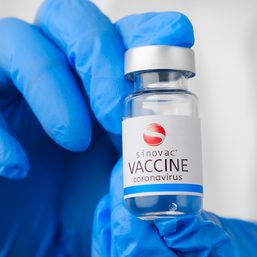
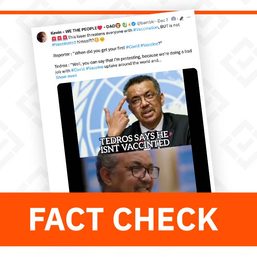
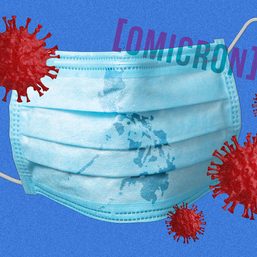
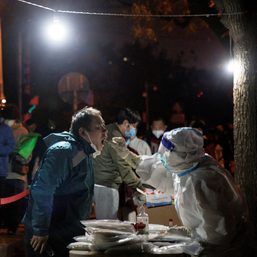
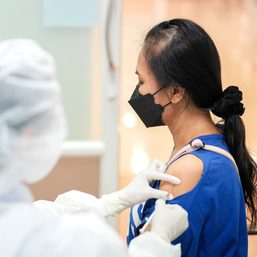
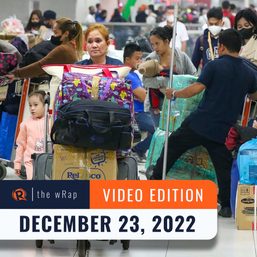
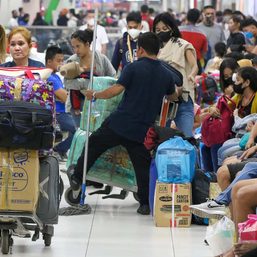
There are no comments yet. Add your comment to start the conversation.